From Patterned to Plain: A Visit to the Courtauld Gallery Exhibition on Omega Workshops
We visited the Courtauld Gallery’s display of items from the Omega Workshops. The Workshops operated in London between 1913 and 1919 under the directorship of Roger Fry, Vanessa Bell and Duncan Grant. The Courtauld is fortunate to be able to draw on its extensive collection of Bloomsbury art and design, much of which was bequeathed to it by Fry.
The current exhibition is small, but it successfully demonstrates the willingness of the Omega artists to apply their decorative ideas in many forms, from fine art, to rugs, screens and tableware. The exhibition even includes a musical instrument, a type of harpsichord known as a virginal. This was extravagantly decorated by Fry, somewhat to the dismay of Arnold Dolmetsch who made it.
The exhibition was effective in teasing out different aesthetic ideas within the group by placing highly patterned work alongside deceptively simple ceramics. We were thrilled to see Duncan Grant’s Lily Pond Design, familiar from the table at Charleston, applied in a dramatically different context on a large folding screen (pattern has been photographed below). Grant’s work made an interesting contrast with a selection of Fry’s monotone tableware, in which Fry pursued his interest in form and the imperfections left by the artist’s touch.
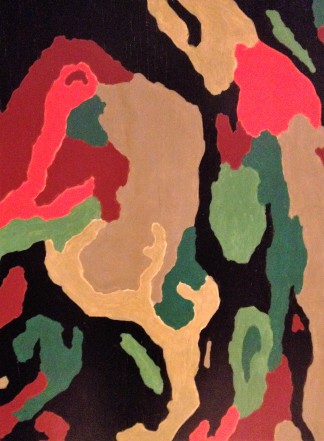
Duncan Grant, 1913-14, oil on wood, screen with Lily Pond design, © The Samuel Courtauld Trust, The Courtauld Gallery, London
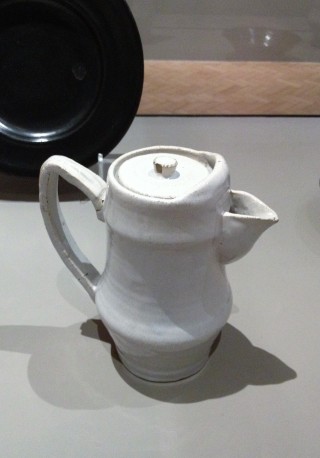
Roger Fry, 1913, white coffee pot, , tin-glazed earthenware © The Samuel Courtauld Trust, The Courtauld Gallery, London
The exhibition also touched on the Omega artists’ receptiveness to the influence of other cultures. For example, Grant is said to have borrowed ‘liberally from African textiles’ for a rug design (see below).[i] This is perhaps not surprising as African designs featured in Fry’s lectures and the Omega Workshops sold textiles produced for the African market. Moreover, the Omega Workshops’ active period followed a period of heightened interest in African art, especially among artists such as Picasso, Matisse and Fry, some of whom owned African sculptures. Further signs that Grant shared their interest can also be found in the Angelica Garnett Gift, which includes sketches of African dance masks.
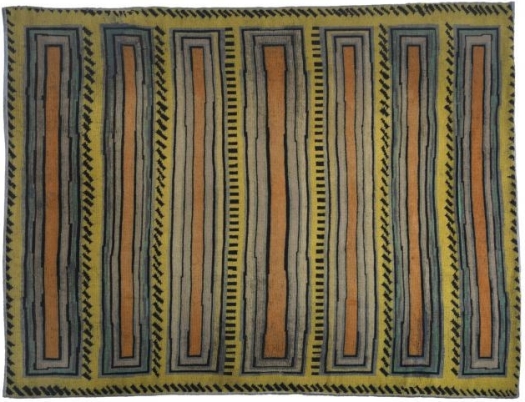
Duncan Grant, 1913, rug, hand-knotted wool with a jute or hemp warp, © The Samuel Courtauld Trust, The Courtauld Gallery, London
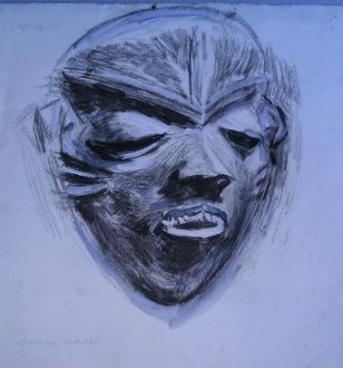
CHA/P/3316, Duncan Grant, drawing, Bapende dance mask, colour wash and charcoal, © Charleston Trust
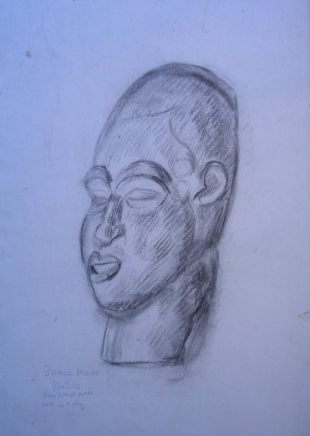
CHA/P/3323, Duncan Grant, Ibibio dance mask, charcoal on paper, © Charleston Trust
The shape and colour of Fry’s ceramics echo those of the Chinese Song dynasty (960-1279) and include his 20th century take on a traditional rice bowl and a turquoise tureen with a bison, or Chinese lion, on the lid.
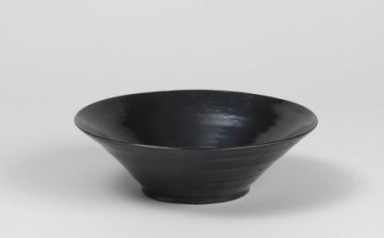
Roger Fry, c. 1916, black-glazed bowl, glazed earthenware, © The Samuel Courtauld Trust, The Courtauld Gallery, London
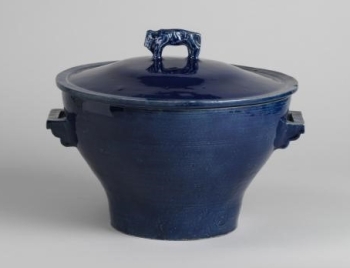
Roger Fry, 1915, blue-glazed cover tureen, glazed earthenware, mould made © The Samuel Courtauld Trust, The Courtauld Gallery, London
Previous posts on the blog describe how Duncan Grant and Vanessa Bell shared Fry’s interest in China, especially after Julian Bell’s move to Wuhan in central China to teach English. This is also reflected in the Angelica Garnett Gift, where we have re-discovered tourist souvenirs from China and sketches of figures wearing traditional dress known as ‘Han Fu’.
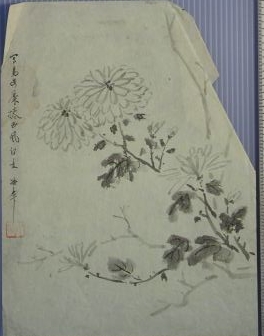
CHA/P/4029, Chinese souvenir of floral design and traditional poem, ink on Chinese paper, © Charleston Trust
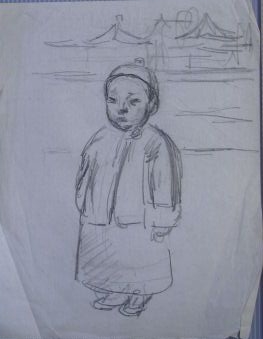
CHA/P/4024, Vanessa Bell/Duncan Grant, Chinese child, pencil on tracing paper, © Charleston Trust
The exhibition ‘Bloomsbury Art and Design’ continues until 21 September 2017. For further details click here to visit their website.
[i] Courtauld Gallery London, Bloomsbury Art and Design, London: Courtauld Gallery, 2017.
